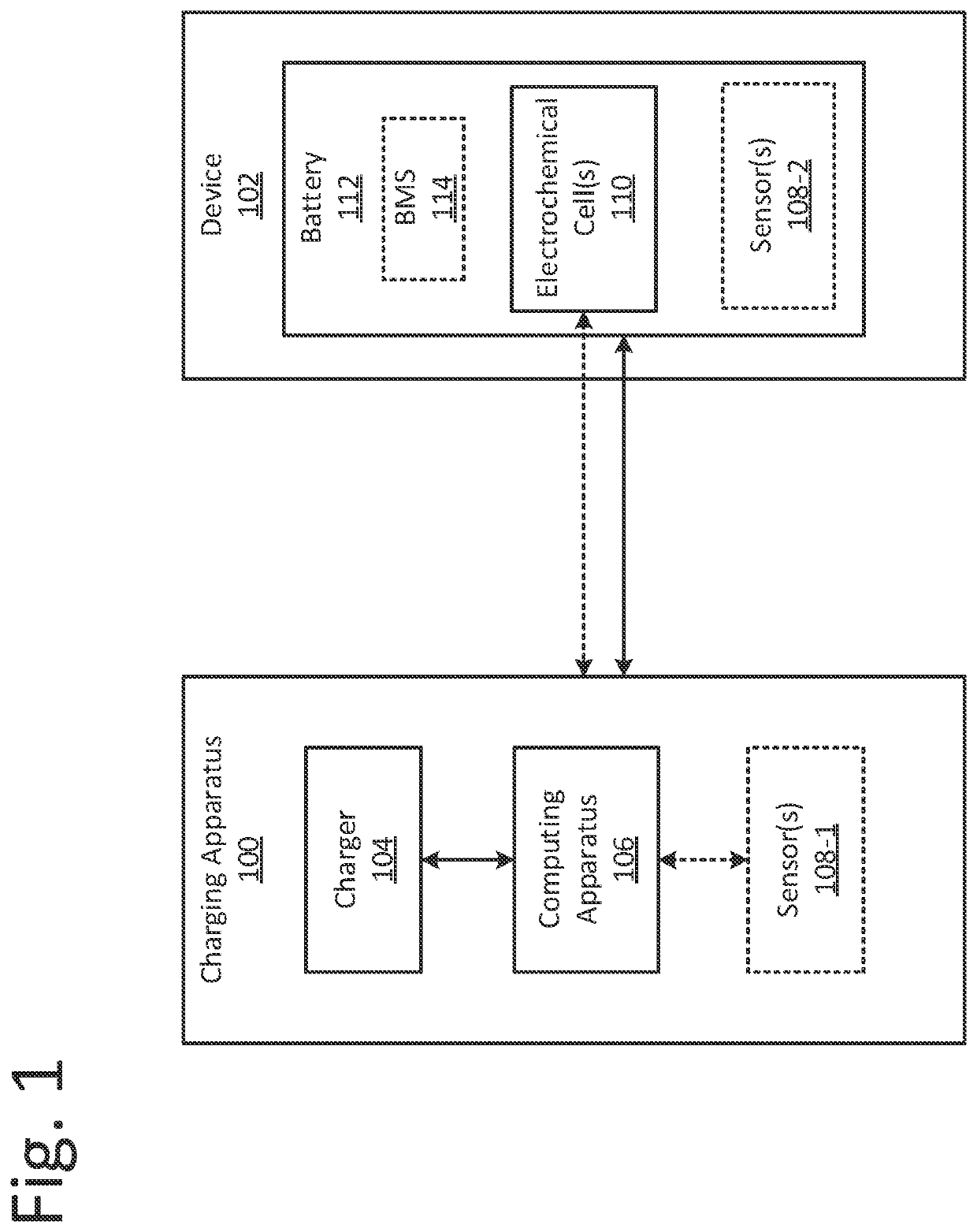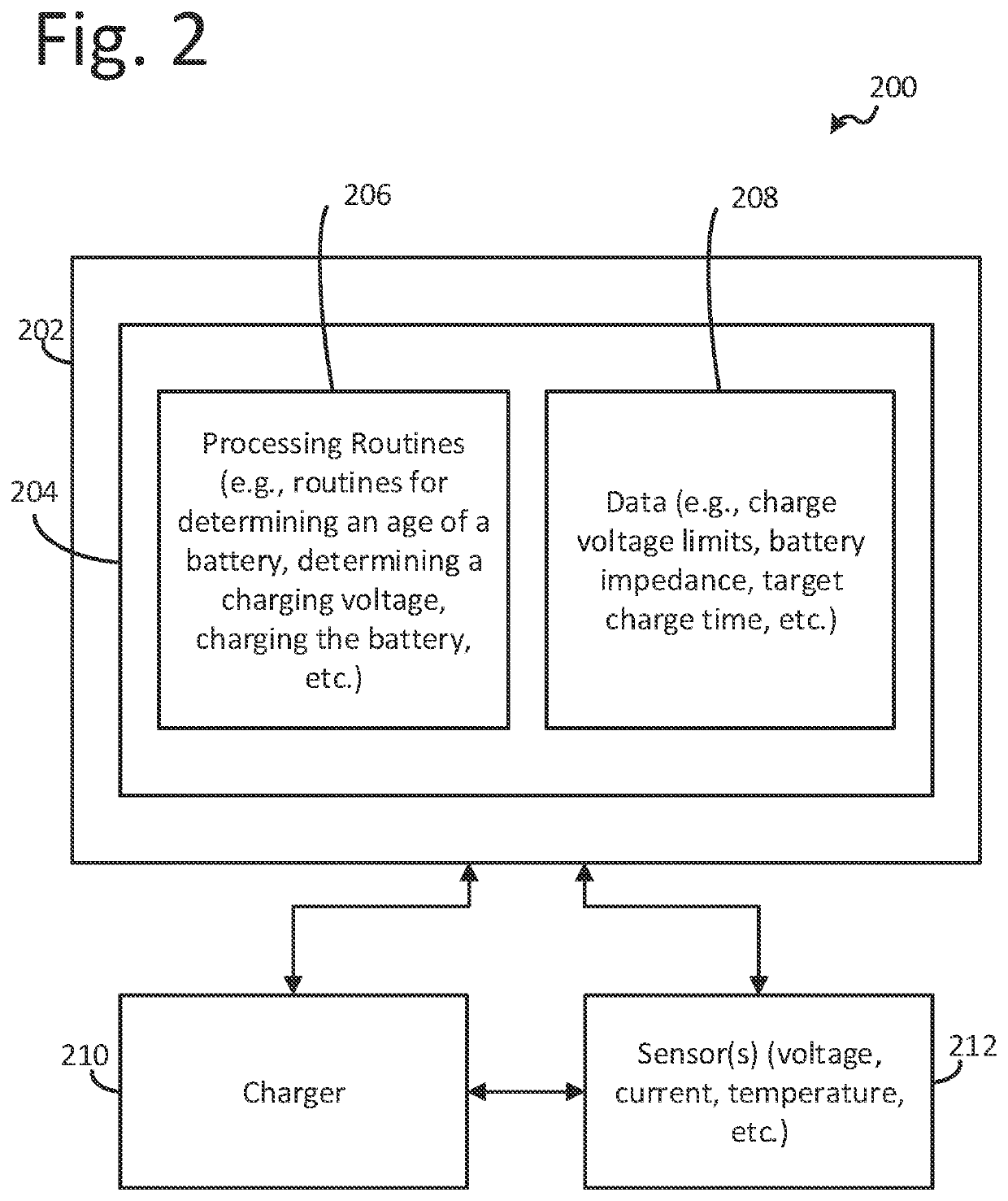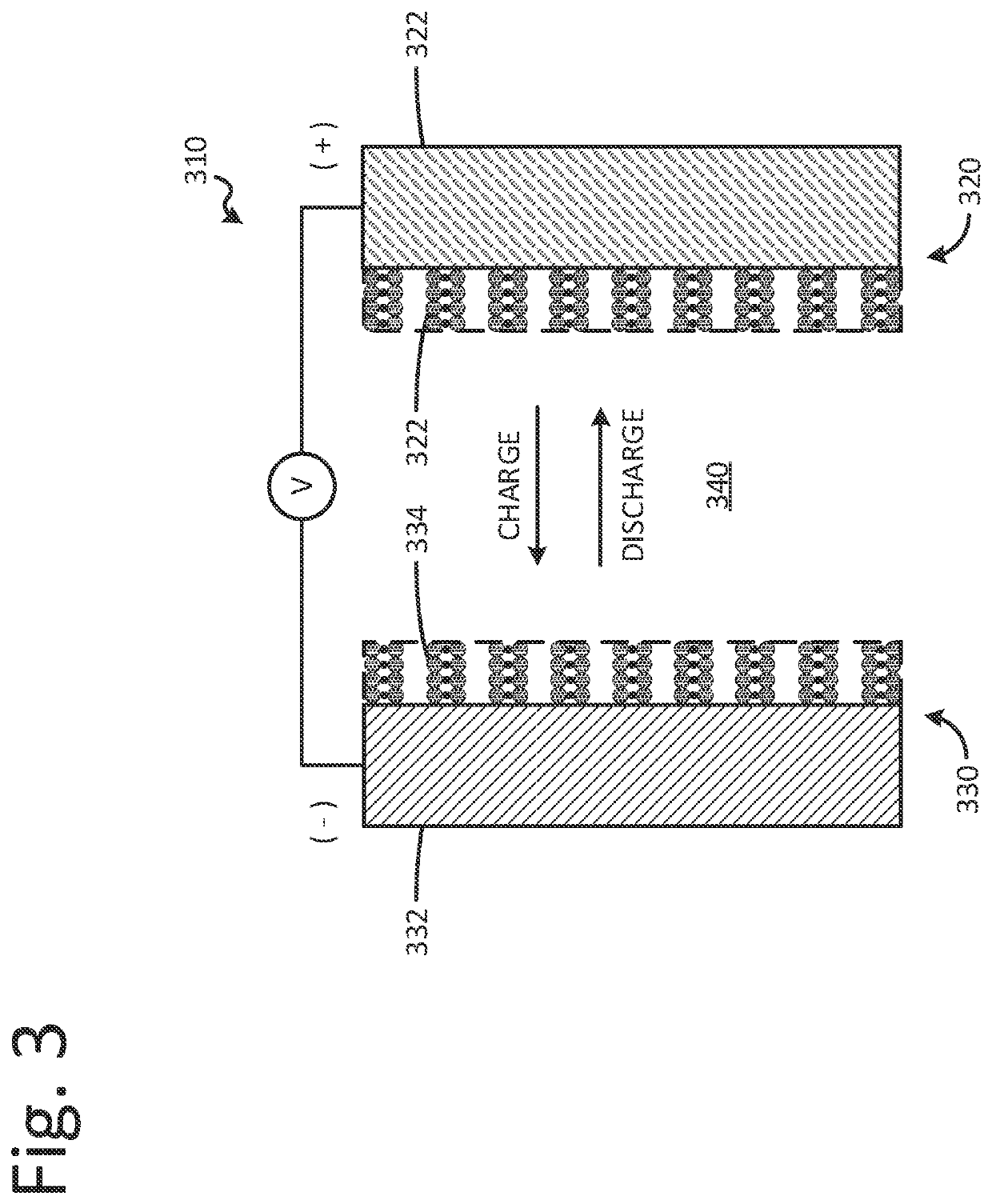Systems and method for charging batteries
a battery and charging system technology, applied in secondary cell servicing/maintenance, instruments, electrochemical generators, etc., to achieve the effect of preventing lithium ion plating, constant fast recharging, and positive electrode potential
- Summary
- Abstract
- Description
- Claims
- Application Information
AI Technical Summary
Benefits of technology
Problems solved by technology
Method used
Image
Examples
example ex9
[0116] The method of example Ex1, wherein the battery is a lithium ion battery, wherein the battery comprises an anode having a lithium ion intercalation potential of at least 0.5 V above lithium metal.
[0117]Example Ex10: A battery charging apparatus comprising:[0118]a charger to charge one or more batteries; and[0119]a computing apparatus comprising one or more processors operably coupled to the charger and configured to:[0120]determine an age of a battery;[0121]determine a charging voltage for charging the battery based on the determined age of the battery, wherein the charging voltage increases as the age of the battery increases; and[0122]cause the charger to charge the battery at the charging voltage for the duration of a charge cycle.
[0123]Example Ex11: The apparatus of example Ex10, wherein to determine the charging voltage the computing apparatus is configured to:[0124]determine a base charging voltage;[0125]determine a charging voltage increase based on the determined age o...
PUM
| Property | Measurement | Unit |
|---|---|---|
| charge voltage | aaaaa | aaaaa |
| voltage | aaaaa | aaaaa |
| time | aaaaa | aaaaa |
Abstract
Description
Claims
Application Information
 Login to View More
Login to View More - R&D
- Intellectual Property
- Life Sciences
- Materials
- Tech Scout
- Unparalleled Data Quality
- Higher Quality Content
- 60% Fewer Hallucinations
Browse by: Latest US Patents, China's latest patents, Technical Efficacy Thesaurus, Application Domain, Technology Topic, Popular Technical Reports.
© 2025 PatSnap. All rights reserved.Legal|Privacy policy|Modern Slavery Act Transparency Statement|Sitemap|About US| Contact US: help@patsnap.com



